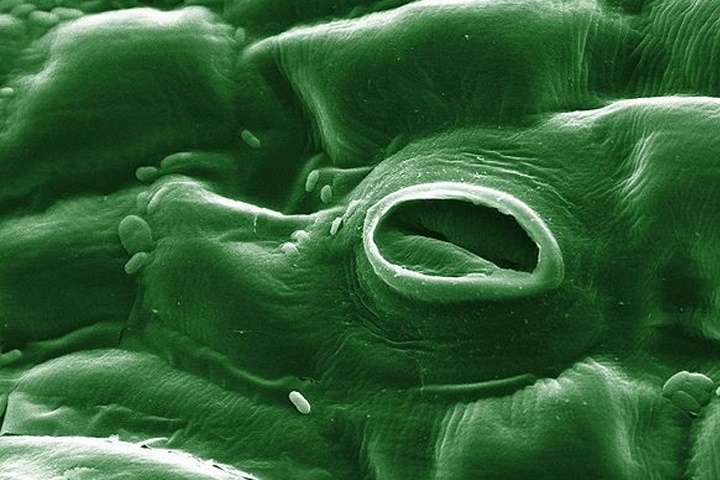
What Are Stomata And Why Should You Care?
The tiny holes can be found on the underside of the marijuana leaf (and just about every other plant.) They’re called “stomata” and they require a microscope or at least a magnifying glass to see. As far as the second half of the question, you don’t care.
Think of stomata as the respiratory system of the plant. They breathe in CO2 and breathe out oxygen. That’s exactly the reverse of what animal life does. The stomata use a vacuum system to suck in gasses and to expel them. Different stimulation on the plant causes repositioning. In fact, understanding how stomata work can help you grow the highest quality cannabis and achieve the best yields.
In this article we will cover:
How do stomata work
Stomata climate cycles
Managing CO2 in your plants
Blue light and stomata
The importance of moistur
How do stomata work
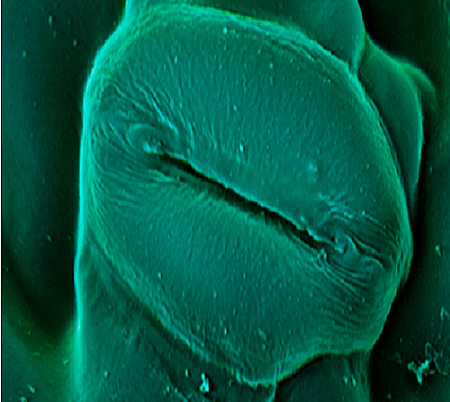
Stomata open and close regularly. They open to absorb CO2. They close to retain moisture. Marijuana grows while maintaining this balance. To be a successful grower, you need to stay on top of the balance. It’s not as crazy as walking a tightrope after nine or ten rips from a pop culture decorated Pyrex bong but it’s still a balancing act you need to think about. Regulating the growing environment regulates the stomata and in doing so keeps the moisture where it should be and the absorption of CO2 where it should be as well.
Each individual stoma is comprised of a guard cell and an auxiliary cell. The guards open and close the hole. It’s accomplished by absorbing or releasing water so they either fill up or drain out like a water balloon, closing and open the hole by filling up the space or taking the filling away. This whole process is called osmosis. Nutrients and minerals build up in their cells, which attracts water. This is mostly potassium and sugars and this is why proper nutrition is critical for pot. The auxiliary cells accomplish the opposite, pulling potassium from the guard cells and then attracting water. When the plant is low on water, a hormone sends a signal to close the holes.
One thing to remember is that the stomata are vulnerable just like a human. If you walk into a room filled with tear gas and breathe it in, your body will be damaged. Stomata absorb CO2 just like the plant needs but if the environment has bad gasses like carbon monoxide, which ends up getting absorbed as well. If you want to know more about marijuana growing, make sure you download my free marijuana grow guide.
Stomata climate cycles
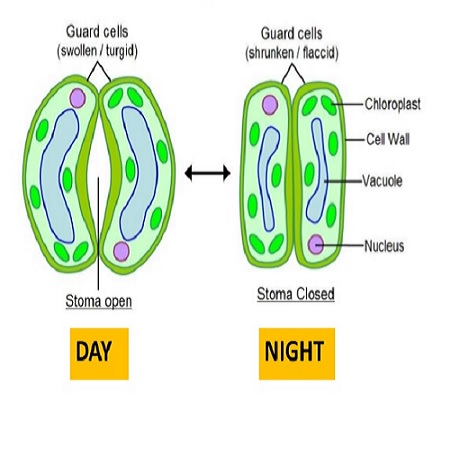
Ever thought plants sleep? They sort of do. Stomata has a cycle just like people. They’re usually open during the day to pull in CO2 and they’re usually closed at night to retain moisture. Managing the climate and the light your plants received thus becomes critical to success in growing. The stomata operate the respiration of the plant in a complicated cycle affected by a great many factors. Imagine drowning. That’s what it’s like for a plant if the stomata cycle gets screwed up. In a best case scenario, the plant stops growing. In a worst case scenario, the plant dies.
Managing CO2 in your plants
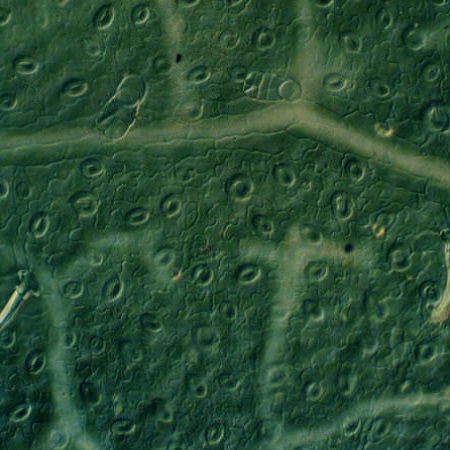
The plant wants a balance between external CO2 and internal CO2. Light and CO2 concentration in the air play a big roll. Light intensity impacts things because the more light, the larger the stomata open. On the other hand, light causes the plants to lose concentration of CO2 in the leaf. That makes the stomata open to absorb more. The light causes the plants to lose concentration of CO2 in the leaf. That makes the stomata open to absorb more. The light causes…
If there is too much CO2 in the air, the stomata openings will be smaller. That’s what causes leaves to turn yellow. Essentially, the plants overheat, and that’s why cooling your plants by maintaining airflow is important. It you’re super dedicated and can manage CO2 levels, you want about 1500 ppm (parts per million). Download my free marijuana grow guide for more about CO2 and ppm's.
Blue light and stomata
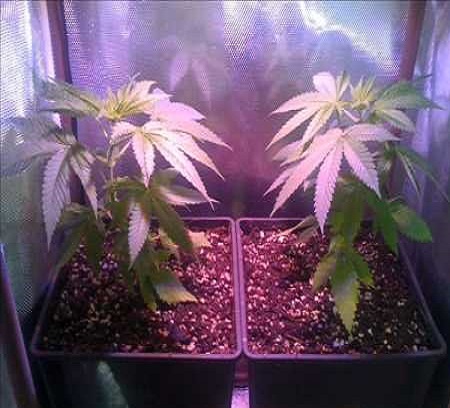
You may have read that you can manipulate the stomata process with blue light. It’s true that blue light is far more effective than red and strongly impacts the stomata cycle. Don’t go buying colored lights!
One of the wonderful things about pot is that it’s a naturally incredible plant. If you screw with the very carefully balanced system of water and CO2 management, you’ll end up hurting rather than helping. Stick with the best choices, HPI and HPS lamps, if you want to grow indoors.
The importance of moisture
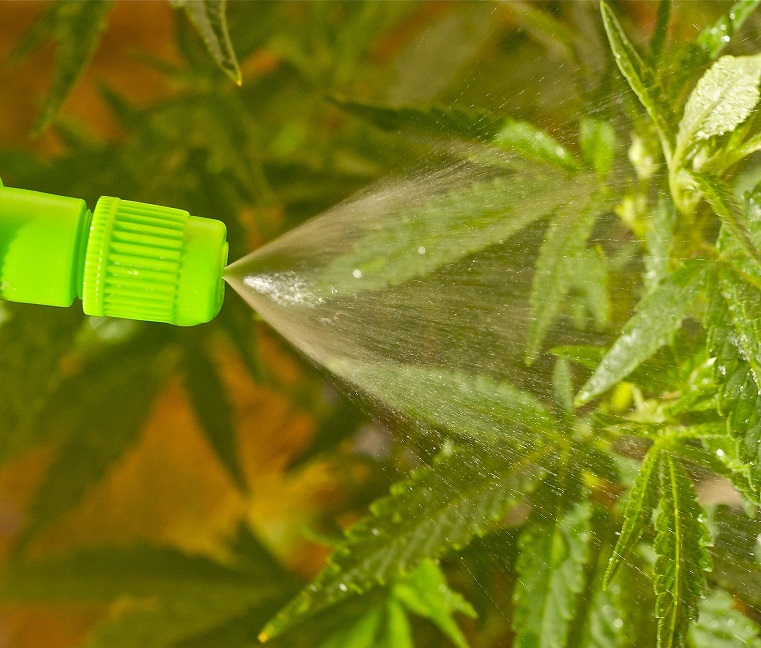
Water is simply critical to effectively growing weed . If a plant gets low on water, the stomata close. Sure, that means photosynthesis stops but retaining moisture saves a plant from drying out and dying. Worse than the lack of photosynthesis, though, is that the plant will overheat. Opening the stomata is how a plant regulates its temperature. Closed stomata make the leaves get hotter. The heat causes evaporation even when stomata are closed. Low internal moisture becomes an ongoing vicious cycle.
The cycle gets worse. Without the stomata and the cooling effects, the humidity in the environment gets lower. With less moisture in the air, the already overtaxed plant creates more issues. The good news is that constantly high humidity allows plants to keep their stomata open regularly because there’s no risk of losing moisture. ( Some Dutch scientists at the University of Wageningen in the Netherlands figured that out.)
Here’s the bottom line. Your plants need moisture and they need light. This is utterly critical, and you can’t screw with the cycle. Treat your plants right, and they’ll reward you.
Many factors influence cultivation and your success is all about what you put into learning about it. The stomata represent a critical part of the picture, but it’s still just one part. For more tips on plant physiology, be sure to download my free Marijuana Grow Guide for a handy offline source or visit ilovegrowingmarijuana.com.
Happy growing,













